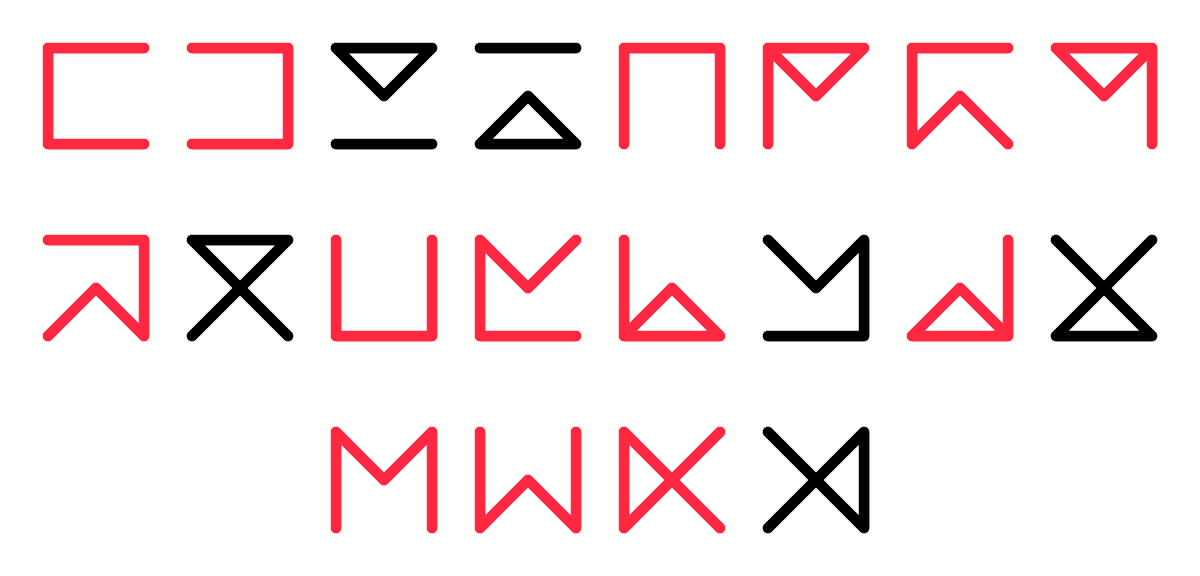Livermore’s Permutation Typograph
Pocket writing machine
“Be it known that I, Benjamin Livermore, of Hartland, in the county of Windsor and State of Vermont, have invented a new and improved Hand-Printing Device or Mechanical Typographer; [...] The object of this invention is to obtain a portable device which may be held in the hand and operated with the greatest facility for printing direct upon paper or other suitable material. [...] To this end the invention consists in the employment or use of a combination type – that is to say, a type composed of several sections, arranged and combined in such a manner that any one of the sections may be used seperately, and certain parts used combined, in order to form the different letters of the alphabet, as hereafter set forth.”
The six base elements

Patent excerpt
‘I represents what I term a “combination type.” It is formed of six different parts, designated by 1 1',2 2', and 3 3'. as shown in Fig.4. The parts 1 1' and 2 2' form a hollow square, while the parts 3, 3', are of V form and within said square, 3' being inverted and having its angle adjoining the angle of 3, as shown clearly in Fig.4. By means of these six parts the alphabet is formed, as shown in Fig.5. The part 3' when pressed against the paper forms the letter A. 3', 3', and 2 form the letter B; 3, 2 and 1', the letter C; 3', 1', and 2', the letter D; 1, 1', and 2 the letter E; 2 and 1, the letter F; 3', 2, and 1, the letter G; 3 and 2, the letter H; 2, the letter I; 1' and 2', the letter J; 3, 3', and 2, the letter K; 2, 1', the letter L; 3, 2, and 2', the letter M; 1, 2, and 2', the letter N; 1, 1' 2, and 2', the letter O; 3, 1, and 2, the letter P; 3, 1, and 2', the letter Q; 3 and 2 the letter R; 1, 2', and 3' the letter S; 1 and 3', the letter T; 2, 2', and 1', the letter U; 3, the letter V; 3', 2, and 2' the letter W; 3 and 3', the letter X; 3 and 1', the letter Y; 1, 1', and 2', the letter Z;’ — Benjamin Livermore
A to Z

All possible combinations
With six base shapes the total amount of combinations adds up to 64 (including zero elements) possible glyphs. The following images display all of these sorted by the amount of used lines (1 to 6). The red combinations are used for the base alphabet.






Font tester
Modularity
foreverness